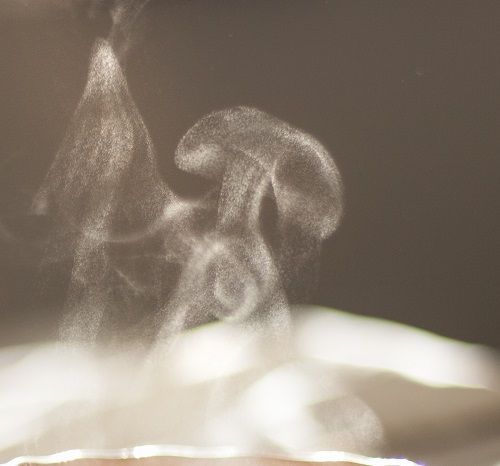 1) A gas expands to fill the volume of its container.
1) A gas expands to fill the volume of its container.
We don’t always choose the box we’re in, but we can fill it. We can expand to occupy the most space, to make the most impact possible. And no, I’m not talking about manspreading. I’m talking about occupying whatever role we currently have, filling it with whatever we can.
Your work can do this. In a positive way, you can flesh out a piece to take up as much space as you give it. In a negative way, a project will take as much time as you give it too. So be aware of the containers you choose for your work.
2) A gas is more potent when concentrated.
It can be deadly in a tight space or harmless when spread out in the open air. While the gas, and our work, will expand to fill its container, we can use that to our advantage. We can put limits on our work in order to get the most punch out of the least amount of material.
When looking at advice for portfolios, whether photography, design, or something else, I repeatedly come across the suggestion that you only include the best work even if that means you don’t have as much quantity as you want. Adding a few mediocre photographs to a couple great ones doesn’t make the whole selection better. It actually takes away from the great ones. Padding rarely makes a piece of writing have more impact. Judging from my papers as an undergraduate, that lesson took me a while to learn, but it stands. A word count doesn’t do you much good if you reach it by diluting the work. Often, our most important task is to cut down a piece we have written, not add more to it.
3) A gas sometimes stinks.
So does your work. It’s okay, though. Let it rest and the smell will dissipate.
4) A gas is often the most harmful when it is colorless, odorless, and tasteless.
The smell we recognize as propane or butane is actually an additive. It’s there because, otherwise, we wouldn’t be able to notice a gas leak until it was too late. Sometimes our work is undetectable. It’s indistinguishable from everything around it, blending into the environment. That might not be dangerous to those who don’t notice it, but it is dangerous to us as creators. W
e want to produce something worth noticing, work that demands attention. Not work that slowly puts people to sleep, poisoning them without their knowing it.
5) A gas can be explosive.
Most of the time, when I think flammable, I think about liquids: gasoline, propane, lighter fluid. But in liquid form, most of these substances aren’t a problem. It’s not until there’s the right mixture of the gas and oxygen that the reaction really takes off, resulting in spectacular and sometimes devastating explosions.
Your work can be explosive too. Sometimes, you just have to find the proper ratio of words and white space, impact and caesura. Other times, you need to combine your work with someone else’s, or you just need to find the right environment for it. You might not always know when the spark is coming, or who will provide it, but you can do your best to be ready for it.
So, what did I miss? How else is your work like a gas? Or did I stretch the analogy too far already? Let me know your thoughts in the comments below.
Leave a Reply